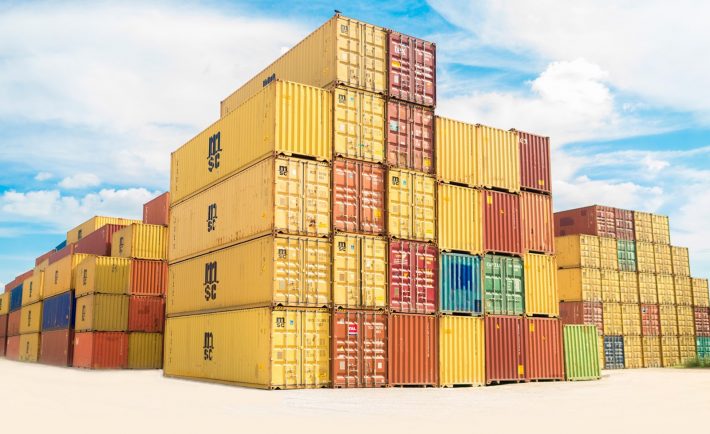Whenever you’re shipping merchandise, products, or supplies, you have to contend with shipping damage that can occur at any link in the delivery chain. There are so many things that can damage your package and its contents — vibrations from potholes and other road surface irregularities, rolling and pitching in container ships at sea, aerodynamic buffeting and touchdown impacts on planes, impacts when train cars connect. Changes in humidity and temperature, as well as wet weather conditions, can all threaten your shipments.
here are some easy tips for reducing shipping damage:
- Use the right size box. Make sure that the box is big enough to fit your item without too much extra space. Extra space can cause the item to move around inside the box, which can lead to damage.
- Pack the item securely. Use packing materials like bubble wrap, packing peanuts, or crumpled paper to fill any empty space in the box. This will help to cushion the item and prevent it from moving around.
- Mark the box “fragile.” This will help to alert the shipping carrier to handle the box with care.
- Choose the right shipping method. Some shipping methods are more likely to cause damage than others. For example, shipping by air is more likely to cause damage than shipping by ground.
- Insured your shipment. This will protect you financially in case the item is damaged in transit.
By following these tips, you can help to reduce the risk of shipping damage. However, these days, shipping and logistics professionals have options beyond, “Wrap it up as well as you can and hope for the best.” You can use modern shipping and logistics technologies to reduce or eliminate shipping damage, save yourself money, and keep your customers happy. Here’s how to eliminate shipping damage, the 21st-century way.
Understand the Threats to Your Shipments

Optimizing Your Shipping Process
Before you can take the right steps to mitigate shipping damage, you need to know what threats face your merchandise in shipment. The degree and extent of impacts, vibrations, humidity, temperature extremes, and other threats to your shipments depend, to some extent, on how large and how far they’re going. Container shipments from overseas face long journeys by ship or plane, and perhaps continued shipment overland by train or truck. These shipments can face weeks or months of impact and vibrational stress, as well as extreme temperatures and rapid temperature changes, humidity, moisture, and other threats to their structural integrity.

Is Your Business Wasting Money On Shipping?
Even shipments of merchandise directly to customers aren’t exempt from shipping damage — far from it. Last-mile shipping carriers often mishandle parcels, and merchandise may face additional stress from being placed at the bottom of a fully stacked truck, tossed over a fence to be gnawed on by a family dog, placed upside down, or being generally mistreated during the last-mile shipping process.
To fully understand potential causes of shipping damage, you need to know exactly what happens to your shipments and where in the shipping chain potential damage events might occur. A shipping damage indicator can help you glean that information. Shipping damage indicators record all the vibrations, impacts, and stresses that your shipments go through en route, and some models even record information on temperatures and temperature changes, humidity, and weather extremes. All of this information will tell you exactly what your packages are going through, so you can package them to withstand the stresses of shipping.
Preventing Damage Is All about Packaging
International Deliveries: How they Work
You can’t stop the causes of shipping damage — trucks are going to hit potholes, and planes are going to run into turbulence. So your best bet for preventing shipping damage is to package your shipments so that they can withstand the damage that shipping stressors might otherwise inflict.
Fortunately, shipping packaging has come a long way in the past few years, with packaging engineers working to mitigate the damage that shipping stressors and environmental conditions can cause. Make sure you choose the right packaging for your shipments. If you’re shipping a laptop, for example, ship it in a laptop box — they’re specially designed to withstand the shipping stressors that most commonly damage laptops, with multiple layers of styrofoam, regular foam, and cardboard to protect the delicate electronics inside. Always use bubble wrap or air cushions to fill void space for fragile items, and make sure packages have an adequate amount of weather protection.
Here Are Some of the Best Ways to Handle Shipping as a Business
If you’re shipping pallets, it’s vital that you use modern palletizing techniques — make sure you’re using the right size pallets for your products so that they fit without overhanging, for example. Use stretch film and corner posts to keep pallets stable. Stack pallets like bricks and use strapping to hold heavy loads in place. Take steps to keep warehouses and containers clean and dry, and to optimize handling practices among your staff.
You may not be able to completely eliminate shipping damage — accidents happen, and you should be prepared, with the right insurance and return policies, to deal with some amount of shipping damage to the goods you sell and ship. But with proper shipping practices, shipping damage can easily drive you out of business. Use modern technology to understand where the trouble spots might be with your shipments, and keep shipping damage from ruining your business’s reputation.